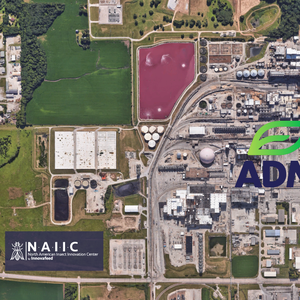BC Salmon Farmers Association press release:
Princeton, NJ, August 10, 2004--The recently published study on PBDEs by Hites, et al confirms previously published studies by Health Canada (2004), Schecter (2004), Luksemberg (2004), Ohta (2003) and others, including Salmon of the Americas (2004) on PBDE levels in farmed and wild salmon. These studies show very low levels of PBDEs in both farmed and wild salmon.
Public health professionals agree that while PBDEs in the environment are a growing concern and must be dealt with, the trace PBDE amounts in both wild and farmed salmon found in the studies, including the Hites, et al study, do not present a health hazard. They advise that consumers should not limit consumption of either wild or farmed salmon.
The Hites’ study authors state that PBDEs identified in this study have not been found to be carcinogenic, but that limited studies show some non-cancer effects observed in mice.
Public health experts agree that PBDEs have not been found to be carcinogenic and generally acknowledge that data is very limited. Public health professionals do not believe that the low levels found in salmon pose any significant risk and the benefits of eating salmon clearly outweigh the small risk which may be present.
The results in each of the PBDE studies referenced are similar. The only significant difference among them is that Hites is the only study which found extremely low levels in wild salmon. These findings are partly due to the fact that Hites included chum and pink wild salmon in the sampling scheme—two species which are typically lower in
PBDEs than farmed and other species of wild salmon, and are rarely available fresh outside of the immediate area where caught (British Columbia or Alaska).
The highest PBDE levels in the Hites study were found in wild salmon. This fact and information from other studies is at odds with the authors’ conclusion that consumers should consume wild over farmed salmon. While the average PBDE content is generally lower in wild than farmed (due in part to the incorrect inclusion of pink and chum wild
salmon) in all studies but the Hites study, the difference is slight. The average of the Ohta (2003) and Health Canada (2004) studies which included farmed and wild salmon show 1.6 parts per billion (ppb) for farmed and 0.7 ppb for wild.
Compared to PBDE levels in other fish, the levels in farmed and wild salmon as found in the Hites study are low. For instance, the 2003 Environmental Working Group study found average levels of 17 ppb in bass and 22 ppb in perch in San Francisco Bay. Other studies show similar levels in a variety of marine and freshwater fish.
How PBDEs enter the body is not fully known. It is likely that routes other than food consumption account for significant intake. These routes of entry include dermal exposure from furniture and inhalation from airborne PBDE residues, which are ubiquitous in computers and other electrical equipment. Studies have shown PBDE levels of parts per million (ppm) in airborne dust. This amount is a thousand times greater than found in any food product.
While it is regrettable that any salmon, or any other foods, contain contaminants, it is important to note that, as with other organic contaminants, the total intake of PBDEs from farmed salmon is only a fraction of what it is from other foods.
If reducing PBDE intake is a goal, then consumers should eat less amounts of food which contribute the most PBDEs in the diet. That reduction will not include reducing intake of farmed salmon (or wild) both of which are rich sources of beneficial omega-3 fatty acids.
Links to PBDE information:
http://www.farmfreshsalmon.org/images/PDFS/PBDEsLINKS081004.pdf










